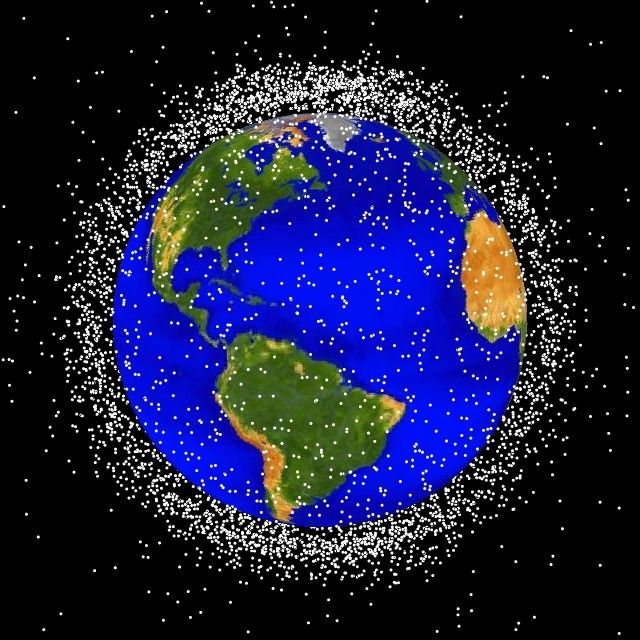Over the six decades since humans first began lobbing objects into space, the celestial environment around our planet has become increasingly crowded with “space junk.” This orbital debris ranges in size, from spent rockets and derelict satellites on down to tiny flecks of spacecraft paint. These objects move at a high velocity—up to 28,160 kilometers per hour (17,500 miles per hour)—making them dangerous to operational spacecraft. Ground-based radar tracks the approximately 23,000 pieces of space junk bigger than a baseball that pose the greatest risk. However, dust-sized debris, which is too small to be tracked, poses a significant threat as well. To better characterize this threat, NASA is installing an experiment, the Space Debris Sensor (SDS), on the exterior of the International Space Station. See also: Orbital motion; Satellite (spacecraft); Science on the International Space Station; Space; Space navigation and guidance; Space station; Spacecraft ground instrumentation; Velocity

The SDS launched aboard a SpaceX cargo delivery flight on December 13, 2017. The one-square-meter detector, installed by the station’s robotic arm onto its Columbus module, faces in the direction of the station’s freefall around Earth, thus maximizing encounters with bits of space junk. The experiment is geared toward detecting objects smaller than one millimeter. The impacting objects penetrate two thin layers of a hardy material called Kapton, which is outfitted with acoustic sensors. The sensors record the time and location of the striking debris; a speed measurement comes from gauging the interval between the penetration of the first and second layers. A size measurement comes from the object tearing through a grid of fine wires also in SDS, and a density estimate from a back plate that stops the object and records its impact energy. See also: Acoustics; Earth; Energy; Robotics; Time
Using these data, researchers can ascertain the origin of the space debris to see whether it is indeed artificial and truly space junk, or a natural micrometeoroid. From gathering this sort of information over two to three years, SDS will allow for better estimates of the population of orbital microdebris, both artificial (and thus constrainable) and natural. Furthermore, because SDS is installed in the same place on the space station where a European experiment measured debris in 2009, the new experiment should gauge how much the amount of space junk has increased over a decade’s span. See also: Meteor
An improved handle on these hitherto little-understood, dust-sized objects will help designers of future satellites prepare for the hazards of the orbital environment. While any given mote of space junk is not likely to cripple a spacecraft, the accumulating damage over extended missions lasting years can degrade sensing instruments or other hardware. Improved shielding, or the identification of orbits less affected by space junk, could ensure that society’s increasingly relied-upon space infrastructure remains functional. See also: Communications satellite; Military satellites; Satellite climatology; Satellite meteorology; Satellite navigation systems; Scientific and applications satellites; Satellite radio; Satellite television broadcasting
Space junk will also increasingly be cause for concern should human activity ramp up in low-Earth orbit. Already, several times over the lifetime of the International Space Station, forecasted close calls with sizable space debris have forced the crew to temporarily take shelter in the station’s equivalent of a lifeboat. Nations such as China have expressed interest in establishing new, manned orbital outposts in the coming decades, and the International Space Station is scheduled to remain aloft at least through 2024. The many dozens of flights to service the space station over that time will only add to the growing fleet of rubbish encircling our world.





